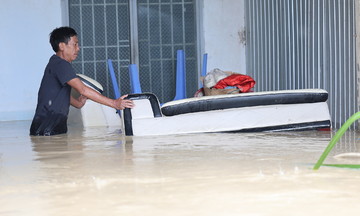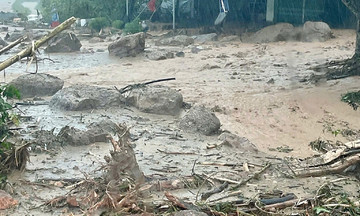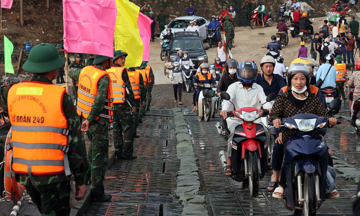More than 48 hours after the tornado, Tu remains haunted by the terrifying experience. "I gripped a pillar with one hand and my wife with the other. The wind lifted her several times. I called for my son in the next room but there was no answer. I thought he was dead, luckily he was only injured," he recounted.
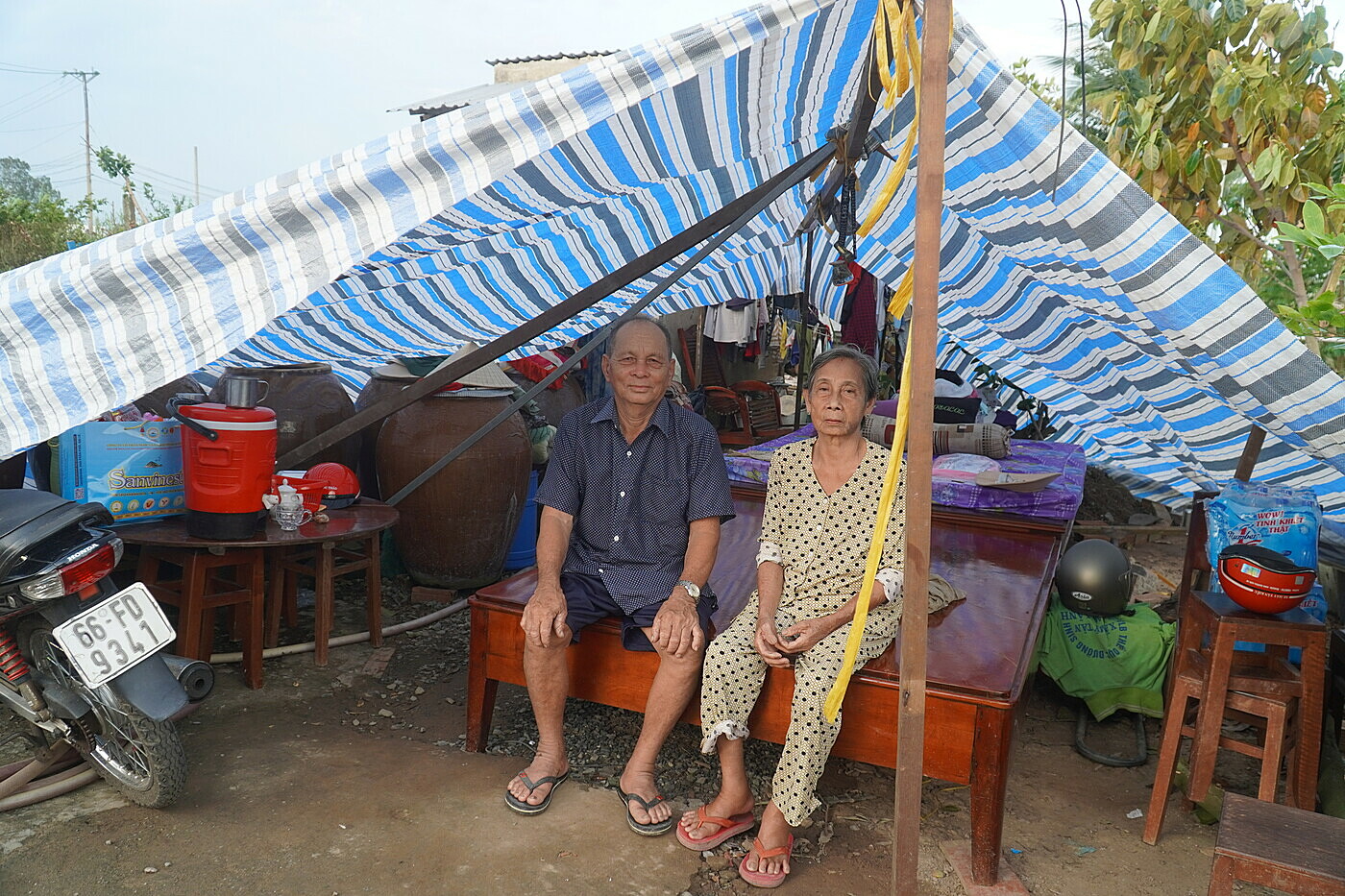 |
Tu and his wife have erected a temporary shelter while they await the construction of their new home. Photo: Ngoc Tai |
Tu and his wife have erected a temporary shelter while they await the construction of their new home. Photo: Ngoc Tai
The man in his seventies surveyed the devastation in disbelief. Trees were uprooted, and his stilt house, built in 1987 with thao lao wood and tiled roof (worth 1,000 gia of rice at the time), had vanished without a trace. Neighboring houses were damaged, with roofs torn off, power lines down, and corrugated iron strewn across the roads.
Tu's family has erected a makeshift tarpaulin shelter by the riverbank, having lost almost all their possessions, including clothes. With help from soldiers, they salvaged some remnants of the house's flooring. Tu and his children have borrowed money to build a temporary shelter, costing over 100 million VND, hoping only "to have a place to live, tornado-proofing is a lost cause."
Nguyen Van De, 74, from My Ngai ward, Dong Thap province, also lost his home. He described the tornado as the most terrifying experience of his life. That morning, De was asleep in his bed (a combined bed and cupboard) when he heard a noise like an airplane. In an instant, the wind ripped his house from its foundations, throwing him out into the yard.
"I was stunned, unsure what had happened. I quickly called my family and thankfully everyone was there," De said. After regaining his composure, he found his bed-cupboard and water heater missing. The refrigerator had landed in the neighbor's yard, and other belongings were scattered and broken.
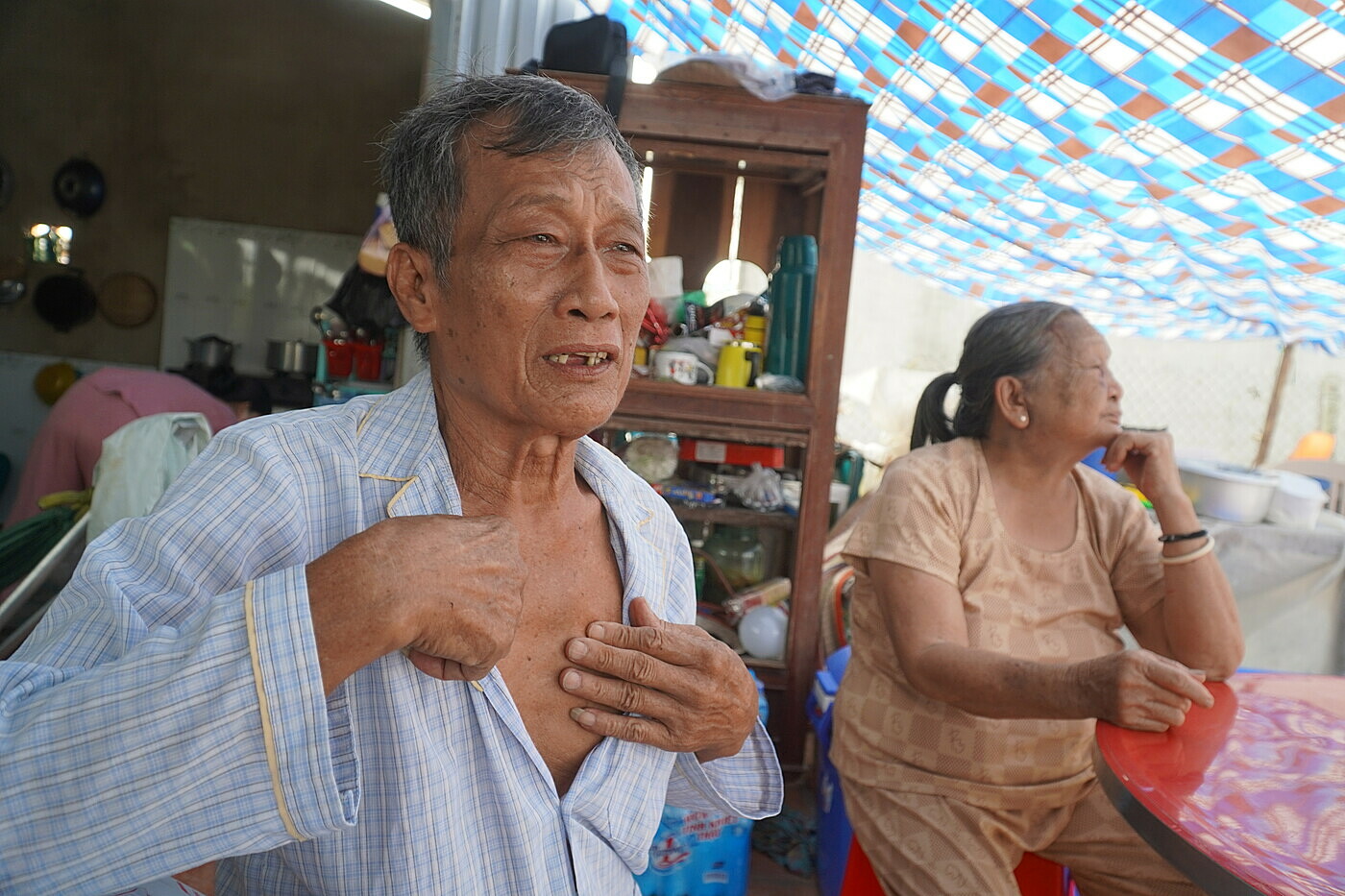 |
De points to his injured chest, while his wife suffered bruises on her cheek and head. Photo: Ngoc Tai |
De points to his injured chest, while his wife suffered bruises on her cheek and head. Photo: Ngoc Tai
De's eucalyptus wood and plank house, built over 30 years ago with a raised metal floor to protect against flooding, reflected the flood-centric mindset of residents in this upstream area, who lacked experience with windstorms. Like many in his neighborhood, De had taken no precautions to secure his house.
The tornado not only destroyed wooden and tin-roofed houses like those of Tu and De, but also severely damaged several concrete houses in the area, ripping off roofs and collapsing walls. Reports indicate 708 houses in Dong Thap and An Giang provinces were destroyed or damaged. Thousands of fruit trees, other trees, and large areas of rice and other crops were also affected.
Since the start of the year, Dong Thap and neighboring provinces have experienced 20 tornadoes, with the storm on 23/7 being the most destructive. The increasing frequency of these unpredictable events necessitates more robust construction to mitigate damage.
According to the 2024 mid-term population and housing census, 94% of houses in the Mekong Delta region are permanent or semi-permanent structures, second to last among the six economic regions, only higher than the Northern Midlands and Mountainous Areas.
 |
The tornado ripped through provincial road 846, causing widespread house collapses and roof damage on 23/7. Photo: Ngoc Tai |
The tornado ripped through provincial road 846, causing widespread house collapses and roof damage on 23/7. Photo: Ngoc Tai
Le Thanh Thoai, a member of the Dong Thap Architects Association with over 10 years of experience in house construction in the western provinces, notes that people in the region favor airy designs with many windows, verandas, and slatted walls for ventilation.
This architectural style, however, is vulnerable to extreme weather. "With uncontrolled airflow, roofs can become like 'kites,' susceptible to being lifted off by strong winds," Thoai explained.
He suggests securing roofs with sandbags or lead wires, closing all doors and windows during storms, and prioritizing wind-resistant designs with east-southeast facing doors. For tin roofs, he recommends using bolts for stronger connections between the roof and the house structure, instead of conventional welding.
Le Minh Trung, Chairman of the Dong Thap Historical Science Association, adds that locals have traditionally focused on flood prevention, prioritizing stilt houses and raised floors. Building materials are often wood, bamboo, or more recently, iron, offering little resistance to strong winds and tornadoes.
"Now that flooding is less of a concern, people need to rethink their approach to house construction, especially with the increasing frequency of extreme weather events like the recent tornado," Trung stated. The government needs to implement policies, perhaps even a national target program, to assist people in the Mekong Delta in building more robust homes to protect lives and property from these unpredictable storms.
Ngoc Tai







